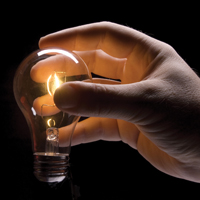“I don’t want to lose my mind.” It’s the plaintive cry of the elderly as the mystic bonds of memory begin to decline. But there’s good news from brain experts who swear by eight simple steps to help you retain name and numbers.
First, there are three basic steps, “Look, Snap, Connect,” according to psychiatrist Gary Small, director of the UCLA Center on Aging. and author of several books about memory loss and cognition.
Look. Tell yourself that remembering a particular name is a priority. Really focus (LOOK) on a name and face you want to remember.
Snap. Create a visual snapshot (SNAP) of the name and face. Note a key visual characteristic: Big ears? Silver hair? Blue eyes? Dimples? Also create an image. A cat stands for Mrs. Katz, a dollar bill for someone named Bill.
Connect. Join the two images (CONNECT). Maybe blue-eyed Bill is a blue dollar bill. The simple act of thinking up these images helps cement them in your memory and increases the odds that the new name will materialize for you the next time you encounter the person.
Use it. Another name trick: use it before you lose it. A new name goes in one ear and out the other; try to trap it inside your head by using it immediately. When you meet John Jones, deliberately repeat his name: “Nice to meet you, John,” then use his name in conversation while you talk: “That’s a great point, John.” but you don’t have to overdo it. Several times is sufficient.
Picture It. To remember to do something, picture it. Need to remember to meet your friend for lunch or to take your medicine? Create an image that associates the task with something else happening around the same time, and then picture yourself following through when you see that cue.
Reminders. To remember where things are, put them in your path. Visual reminders are like crutches. Without them, we have to conjure up an answer from thin air (“Now where did I put my car keys?”) Storing keys right by the door makes you more likely to remember to find it and take it with you. Having a regular storage spot like on the table by the door, is another memory booster.”Leaving it where you can see it so you don’t forget helps your prospective memory, which is remembering to remember things, like where you put something,” psychiatrist Small says.
Review. To recall important events, do a nightly review. Before going to bed, run a mental review of the key things that happened that you want to remember. You got a call confirming an appointment for tomorrow? Promised a friend you’d follow up about lunch? Made a new acquaintance? (What was her name? Her job? Her partner’s name?) Better yet: Carry a small notebook into which you jot critical things to remember during the day. Review these notes at day’s end. Most people find that the combination of writing and then reviewing really helps.
Repeat. To recollect anything: Repeat. Repeat. Repeat. A tactic that goes by the fancy names of “spaced rehearsal” or “expanded retrieval” is a favorite because it’s so effective. Simply repeat something over and over at slightly extended intervals. Say you want to remember a name or a short grocery list, or — as is often the case for Alzheimer’s patients — you need to remind yourself or your loved one to check a calendar. Repeat the name or task to yourself. Wait 15 seconds. Silently say it again to yourself.


